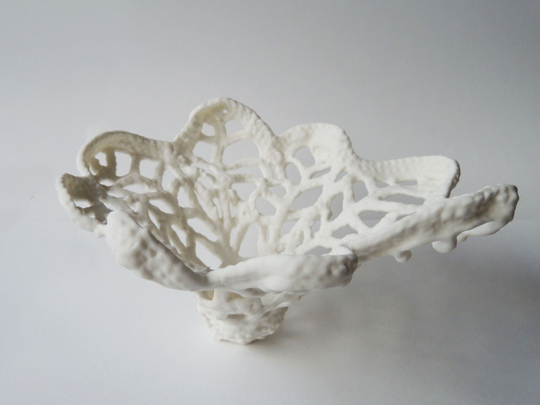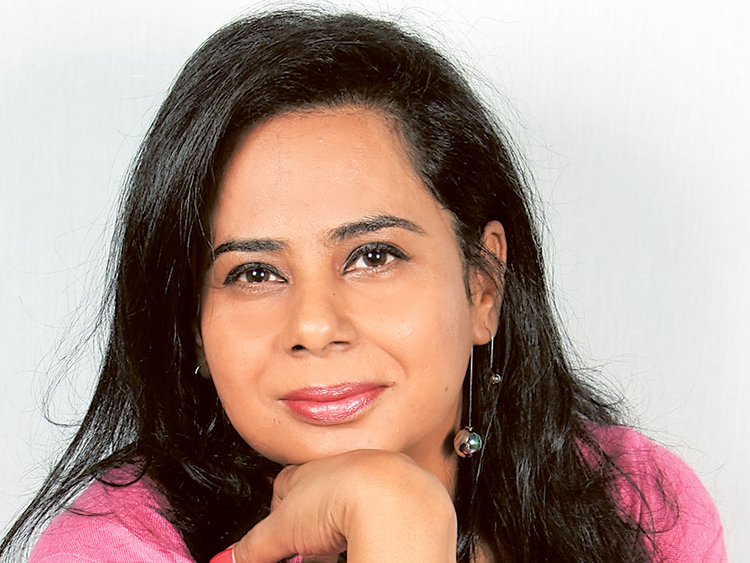
Two decades of serving the arts and creative industries has seen Mukta Ahluwalia Bedi moving her focus from fashion to art in Singapore, eventually finding her niche in the non-profit arts sector.
After postgraduation from Lasalle, Singapore, she worked with the Singapore Art Museum for a short period and then with the Intercultural Theatre Institute (ITI) team in various roles. She also taught art history and arts criticism at Ngee Ann Poly before launching herself as an independent curator.
Mukta moved to Dubai late last year and truly believes in the social significance of arts. “I believe that artists are the barometers of society and artworks are essential social products that facilitate multi-dimensional conversations, even though art-making is often a solitary process.”
Her interest lies primarily in independent platforms for visual artists, where they “are more comfortable to take artistic risks and push the boundaries of their creativity”.
Mukta spoke with Weekend Review about the rapid evolution of the arts scene in Singapore, which in the last 15 years has become one of the global art centres with a highly respected artistic community, many world-class museums and arts education.
She analysed the factors that led to this development, its similarities with Dubai and what the UAE can learn from Singapore to create a vibrant arts scene.
You have described the Singapore arts scene as quite diverse and rich with something for everyone. Can you elaborate on this?
If one looks at simple statistical data there were 44 art exhibitions and 22 performances per day in 2013. These shows are across various platforms, from small artist-run spaces to the larger institutional spaces such as museums and commercial galleries. The kinds of shows also vary from traditional art forms to contemporary arts.
This kind of variety is reflective of Singapore’s cultural and ethnic diversity and its openness to a wide variety of ideas and experiences.
Tell us about the dramatic change in the arts scene in Singapore in the last 15 years.
Every aspect of arts ecology has improved tremendously, with a wider playing field for everyone. When Singapore Art Museum (SAM) opened in 1996, it was the only institutional space dedicated to visual arts. In early 2000 it had this dowdy-old-dame feel to it.
There were few places and points of interaction for the arts community, with a small audience and even fewer collectors. For most artists, being a full-time practitioner was not an option. There was little societal support and limited funding from government or private sectors. Arts philanthropy was underdeveloped.
Fast forward to 2015 and Singapore is Asia’s undisputed arts hub. There is a plethora of art spaces in Singapore. There are many artist-run spaces such as Grey Projects (2008), started by artist and writer Jason Wee. Substation (1990) is another pioneering and visionary arts space crucial to the development of local talent. It started out as an artist-managed space that struggled to survive, but it is now an iconic arts incubator.
Such spaces are crucial for younger artists to experiment with ideas and present them to the peer group and the arts community. This is also where most new art is being made and showcased for receptive audiences.
There are many institutional spaces as well. SAM, in the last six to seven years, reinvented itself into an exciting, cutting-edge contemporary art museum. National Art Gallery — opening this year — will focus on Asian modern art.
On the academic side, there is the NTU Centre for Contemporary Art (NTU CCA) Singapore, which places itself as a space for “critical discourse and experimental practices”. Then there are many art festivals, from biennales to art prizes and smaller collaborations organised by artists.
What has been the government’s role in sustaining this thriving arts culture? How much of the growth has been organic and how much of it is supported by the government?
I think I am trying to capture the diversity and rapid development in Singapore’s arts ecology. C.J. Wee Wan-ling, an eminent academician and author, explains in his text, “Creating Culture in the Globalized ‘Cultural Desert’ of Singapore”, that swift modernisation from 1965 to the Eighties and now the highly rapid change towards a creative economy do not allow for grounds-up organic growth of the society or the culture.
So yes, government policy has played a very important role in fostering the arts ecology at a rapid pace. And it has been successful. There has been generous state funding to create and distribute arts, to educate and inculcate audiences as well as art philanthropists.
In fact, Dubai’s Patron Of Arts Award is formulated with guidance from Singapore’s National Arts Council.
Singapore’s arts and culture policy has been implemented in a systematic, transparent and structured manner over the last two decades. It started with building infrastructure — actual physical museums and art centres such as the Esplanade. Then it focused on development of local talent and finally, on the arts audience and the market. Without government patronage (with private philanthropy almost absent), we could not have such rapid advances in cultivating a mature arts ecology.
However, it is important to note that the excellent quality of the arts made in Singapore is credited to the artists, the community and Singapore’s inherent culture. It is not something the government could have forced through.
The artists have been committed to their art form and have developed their own language, despite the many odds. Initial years saw very little support from the society. There were pioneering artists such as Cheong Soo Pieng and Georgette Chen, who created the regional “Nanyang style”.
Later, second-generation artists such as Thomas Yeo and Anthony Poon coopted modernist sentiments. In the late Eighties, Tang Da Wu and those with The Artist Village focused on creating Singapore’s artistic expression — one that had local social resonance. Singapore’s artists have always been well travelled and connected to a wider Asian and international arts community.
The generous state funding came later, but the artists continued to make art that was honest rather than playing to the market and creating weak art. The younger contemporary artists had their own set of challenges in spite of the funding. Yet they have created meaningful, socially engaging art. They push their own boundaries beyond the comfort zone of ‘easy-to-digest’ accessible art, upholding the artistic and intellectual integrity of their work.
And most importantly for me, an art-loving audience across the population has been nurtured over the years. Attendance at all venues has steadily been rising. Today, there is a culture of not just attending, but also participating in art events.
What are the commercial avenues for art in the city-state?
On the commercial side, ARTSingapore was replaced by two major art fairs — the Affordable Art Fair and the upmarket Art Stage Singapore. Last year, we had the exciting Singapore Art Fair, in which quite a few important collectors and galleries from Dubai participated.
There are many more local and international galleries. These commercial spaces are important for the sustainability of the arts ecology. In a population of about 5.5 million, about 25,000 people work in the arts and culture industry, with almost 7,500 in the visual arts alone. Apparently, there are 5,486 art and culture companies — from making and selling art and raw materials to providing other verticals such as stage lighting, costume design, music equipment, and teaching courses such as puppetry, painting or ballet.
What are the similarities with Dubai and what can the UAE learn from Singapore to create a vibrant arts scene?
There are many similarities between Dubai and Singapore. Both are newer urban centres and have a distinctive Asian character in spite of rapid modernisation. Both started as trading ports and have strong historical links to a colonial past. They are dense, vertical cities with large multicultural, immigrant populations that make them vibrant. Not to forget the love for food and culture that both cities share. Both have ingredients to attract creative people.
Dubai can take a few cues from Singapore to strengthen its position as the arts hub for the Middle East and North African region. Talent development would be crucial. There are few art centres for hobbyists but this needs to be cultivated and encouraged at the tertiary level as well. Academic training is not just to impart skills but it is also a repository of art practices allowing for research into historical arts and culture.
It also needs a lot more artist-run independent platforms where artists can experiment.
Abu Dhabi has big international brands such as the Guggenheim and Louvre and Sharjah has the grounds-up arts scene with its biennale offering an invigorating arts experience. Dubai has the galleries. So, there is a good distribution among the three. However, accessibility is a major issue for the art-loving public as there is a lack of efficient public transport connecting the three. Art events will witness an exponential rise in attendance if a rail link is provided between the three.
Tell us about the Singapore art show you are planning to curate/organise in November this year.
The show is scheduled for three weeks in October. It aims to showcase artistic excellence from Singapore and open up cross-cultural dialogue with some of Singapore’s best contemporary artists. It is a non-commercial show made possible with support from Singapore International Foundation, Singapore Tourism Board, DP Architects and Fraser Suites.
N.P. Krishna Kumar is a freelance writer based in Dubai.













